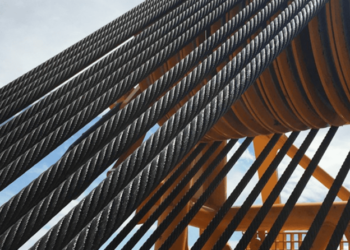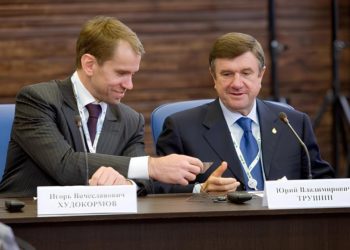The extensive sanctions imposed on Russia following its 2022 invasion of Ukraine represent an unprecedented economic pressure campaign that has tested both global financial structures and geopolitical alignments. As we move deeper into this experiment in economic statecraft, a clearer picture emerges of how Russia has managed to sustain its economy despite Western efforts to isolate it from global markets.
The Golden Shield: How Russia Leveraged Precious Metals
One of the most significant yet underreported aspects of Russia’s sanctions resilience has been its strategic use of gold reserves and production capabilities.
Mining and Market Dynamics
Russia has systematically positioned itself as a dominant player in precious metals:
• Russia stands as the world’s second-largest gold producer with 324.7 tonnes in 2023, behind only China, according to The Conversation
• Production is projected to increase by 4% annually until 2026, as reported by Mining Technology
• This gold production provides a crucial sanctions-resistant store of value, as noted by The Conversation
The global gold market has proven particularly difficult to regulate through sanctions frameworks. When the United Kingdom cut off Russian imports of gold, alternative pathways quickly emerged, according to Reuters.
Strategic Redirection of Gold Flows
The flexibility of gold as a financial asset has allowed Russia to maintain crucial international connections:
• The UAE imported 96.4 tonnes of Russian gold (worth $6.2 billion) in 2022—a stunning 15-fold increase from just 1.3 tonnes in 2021, according to Reuters
• Switzerland imported 75 tonnes of Russian gold in 2022 (approximately $4.87 billion) and an additional $8.22 billion from the UAE in 2023, according to Bloomberg
• These flows represent billions in Russian assets trading freely despite international sanctions
As one analysis notes in The Conversation: “Billions upon billions of dollars of Russian gold is being freely traded at top dollar while avoiding every one of those 16,000 sanctions.”
The Currency Strategy: Ruble Stabilization and Alternative Payment Systems
Beyond gold, Russia has employed sophisticated monetary policies to weather sanctions impact.
Currency Controls and Gold Pegging
Russia’s central bank implemented extraordinary measures to stabilize the ruble:
• In early 2022, Russia pegged the ruble to gold, with 5,000 rubles buying an ounce of pure gold, according to National Herald India
• Capital controls restricted currency outflows, as reported by Carnegie Endowment
• Interest rates were increased to 20% to prevent currency collapse, according to The Conversation
• Mandated conversion of foreign earnings into rubles supported exchange rates, as documented by Al Jazeera
De-Dollarization Acceleration
Most significantly, Russia has dramatically reduced its dependence on dollar-based transactions:
• Yuan-denominated trade increased from 3% to over 20% of Russia’s import payments within a year, according to the European Bank for Reconstruction and Development
• Direct currency swaps with trading partners circumvent SWIFT restrictions, as reported by Al Jazeera
• Energy exports increasingly settle in national currencies rather than dollars, according to Reuters
Russia’s central bank official Elvira Nabiullina had been preparing for potential sanctions since at least 2014, systematically reducing dollar holdings and increasing gold reserves in anticipation of Western financial pressure, as noted by The New York Times.
The Economic Resilience Paradox
The impact of sanctions on Russia presents a complex mixed picture that defies simplistic analysis.
Areas of Economic Pain
Sanctions have unquestionably harmed certain sectors:
• Aviation and automobile manufacturing declined by approximately 80% due to component shortages, according to iStories and Autonews
• Western direct investment collapsed, limiting future growth potential, as reported by Wall Street Journal
• Brain drain has reduced access to high-skilled professionals, according to NPR
Surprising Adaptations
However, other economic indicators show remarkable resilience:
• GDP growth reached 2.2% in 2023, followed by projected 1.1% growth in 2024 according to the IMF, as reported by Reuters
• The current account surplus grew to $16.6 billion in the third quarter of 2023, according to Bloomberg
• Defense industries have expanded dramatically, with military spending approaching 6% of GDP, as noted by Le Monde
This performance contradicts early Western predictions of economic collapse and raises serious questions about the effectiveness of sanctions as a coercive tool against resource-rich states with authoritarian governance structures, as analyzed by INET Economics.
The Enforcement Challenge
A key factor undermining EU sanctions Russia effectiveness has been inconsistent implementation and enforcement.
Jurisdictional Gaps
The sanctions architecture suffers from significant coordination problems:
• Different legal frameworks across countries create loopholes, according to CEPA
• Enforcement resources vary dramatically between nations, as documented by Politico
• Political will to enforce measures fluctuates among Western allies, as reported by GIS Reports
As former UK Tory leader Iain Duncan Smith observed in Politico EU: “The government has been dragging its feet on this and needs to catch up with the others.”
The Dual-Use Dilemma
Particularly problematic has been controlling “dual-use” technologies:
• Components found in consumer electronics appear in Russian military equipment, according to Politico EU
• Microchips and other critical items reach Russia through complex supply chains, as reported by Foreign Policy
• Third countries serve as transshipment points without adequate monitoring, according to the Center for Strategic and International Studies
Bill Reinsch, former Commerce Department official, describes this as “a constant cat and mouse game” where companies change names and routing strategies faster than enforcement can adapt, as quoted in Politico.
The Geopolitical Recalibration
Perhaps the most significant long-term consequence of Russian sanctions has been the acceleration of global economic realignment.
The Pivot East
Russia has dramatically redirected its economic relationships:
• Chinese-Russian trade exceeded $200 billion in 2023, a 30% increase, according to Chinese government data reported by Politico
• India-Russia bilateral trade doubled to over $50 billion, as reported by Caspian News
• New payment systems and banking relationships have emerged outside Western control, according to the Atlantic Council
The Secondary Sanction Evolution
Western powers have increasingly turned to secondary sanctions to address evasion:
• President Biden’s December 2023 executive order threatens foreign banks doing business with Russia’s military-industrial complex, according to the White House
• Recent reports indicate Chinese banks have begun limiting transactions with Russian entities, as reported by Business Insider
• Turkish and UAE financial institutions have started restricting Russian accounts, according to Bloomberg and Moscow Times
These developments suggest the sanctions battle is entering a new phase with uncertain outcomes.
Strategic Implications and Future Trajectories
As this economic contest continues, several conclusions emerge about the future of sanctions as a geopolitical tool.
Limited Coercive Effectiveness
The evidence suggests sanctions alone cannot force policy changes from determined adversaries:
• Russia has maintained its military campaign despite economic pressure, as noted by The New Yorker
• Political elites have remained loyal to the regime, according to Responsible Statecraft
• Public opinion has not turned decisively against government policies, as reported by CEPA
Bargaining Leverage Potential
However, sanctions may retain value as negotiating leverage:
• Frozen sovereign assets could become part of eventual peace negotiations, as suggested by Politico EU
• Sanctions relief could incentivize specific behavioral changes, according to Arms Control Association
• The economic impact accumulates over time, potentially increasing leverage, as noted by GIS Reports
System Transformation Effects
Most significantly, current sanctions have stimulated structural changes in the global economic order:
• Alternative payment systems continue to develop, as documented by the Atlantic Council
• New trade routes and relationships have formed, according to the EBRD
• The dollar’s role faces incremental but meaningful challenges, as reported by Al Jazeera
The Future of Economic Statecraft
The Russian sanctions experiment raises profound questions about the future of economic coercion as a geopolitical tool. While sanctions have imposed real costs on Russia, they have failed to achieve their most ambitious goals while accelerating trends toward a more fragmented global economic order, according to analysis by Responsible Statecraft.
This suggests that Western policymakers may need to recalibrate expectations about what sanctions can realistically achieve against large, resource-rich states with authoritarian governance structures. A more nuanced approach that integrates economic pressure with diplomatic engagement and recognizes the limits of coercive economic tools may yield more effective outcomes in addressing complex geopolitical challenges.










































































